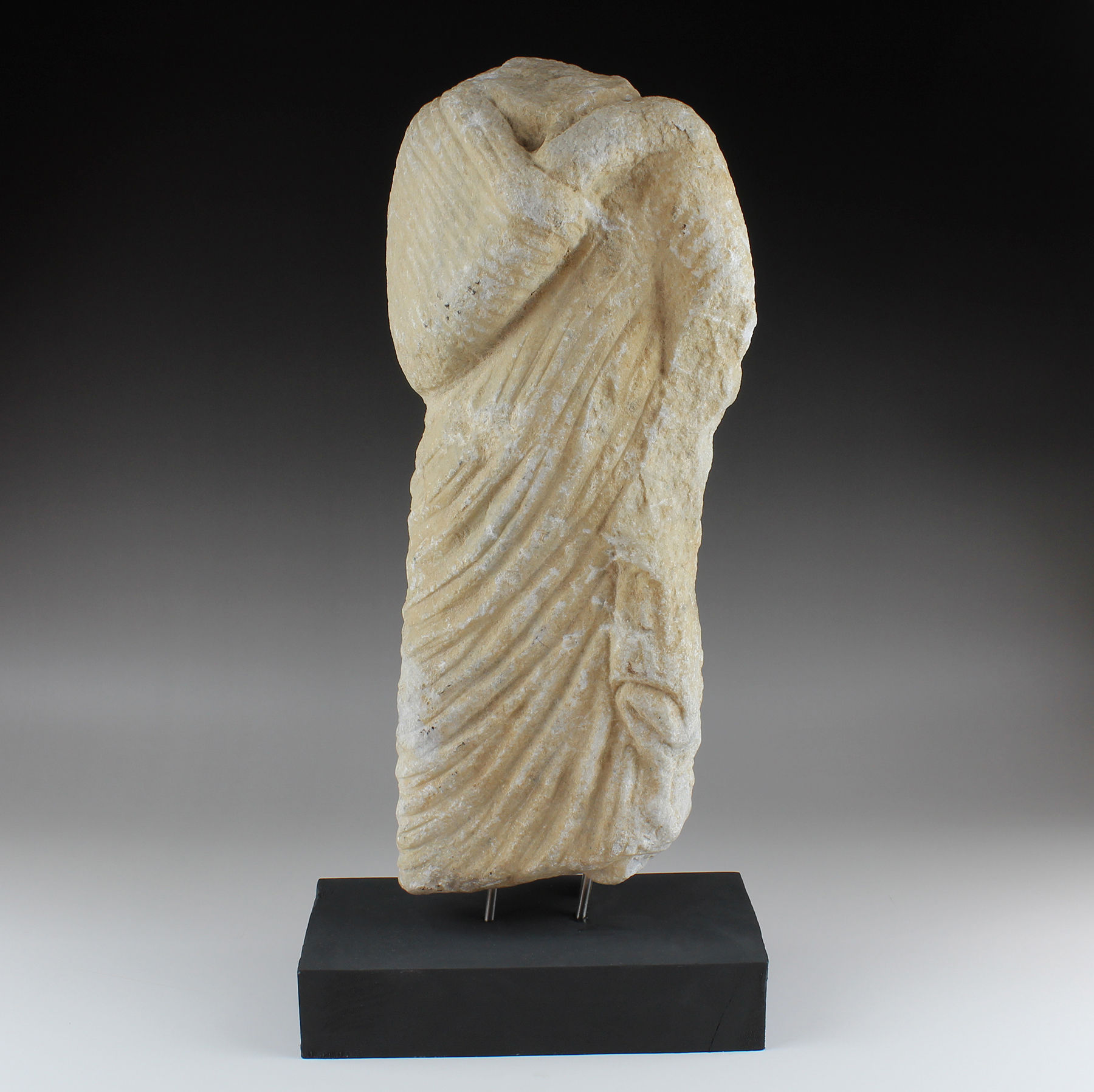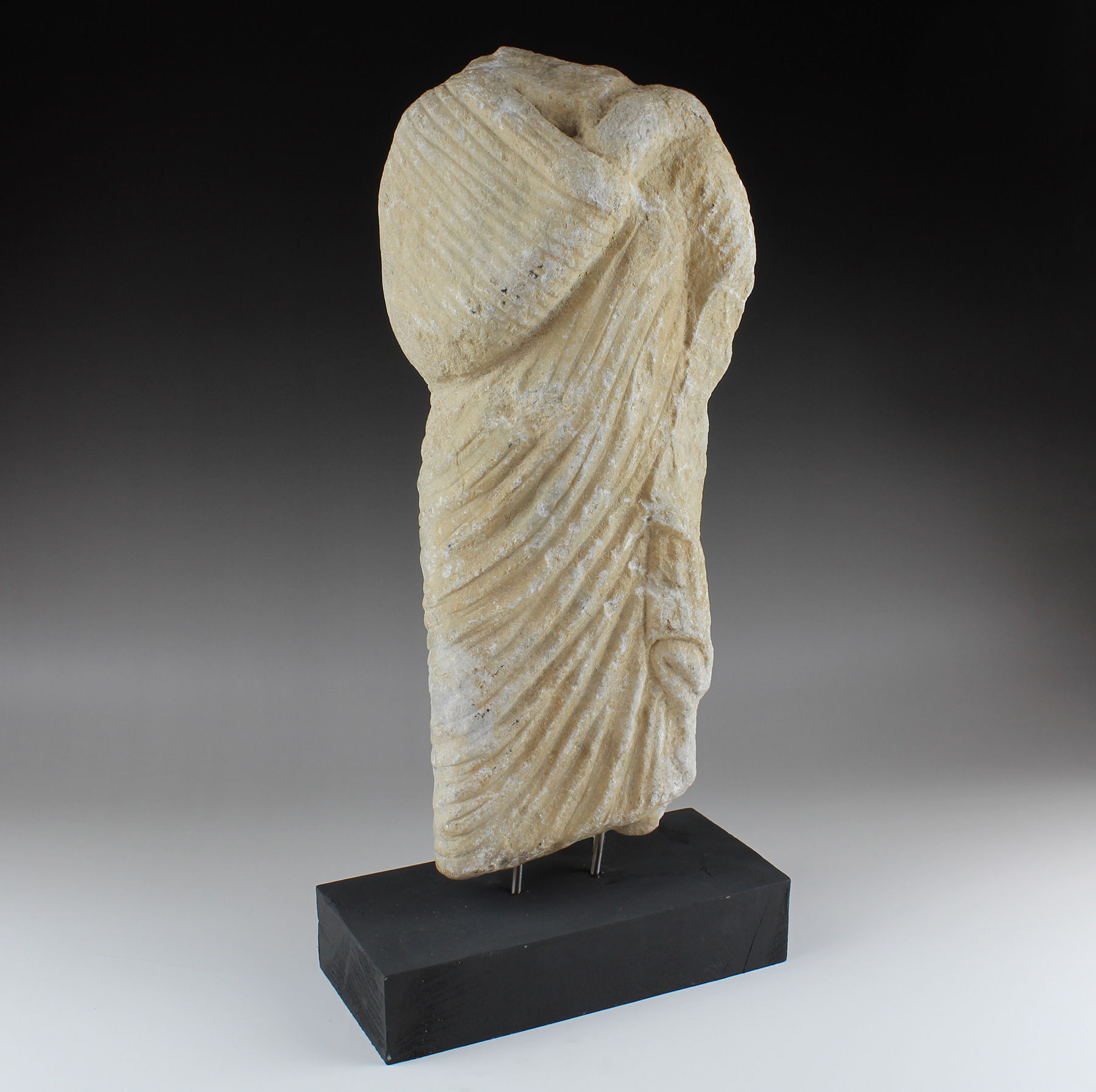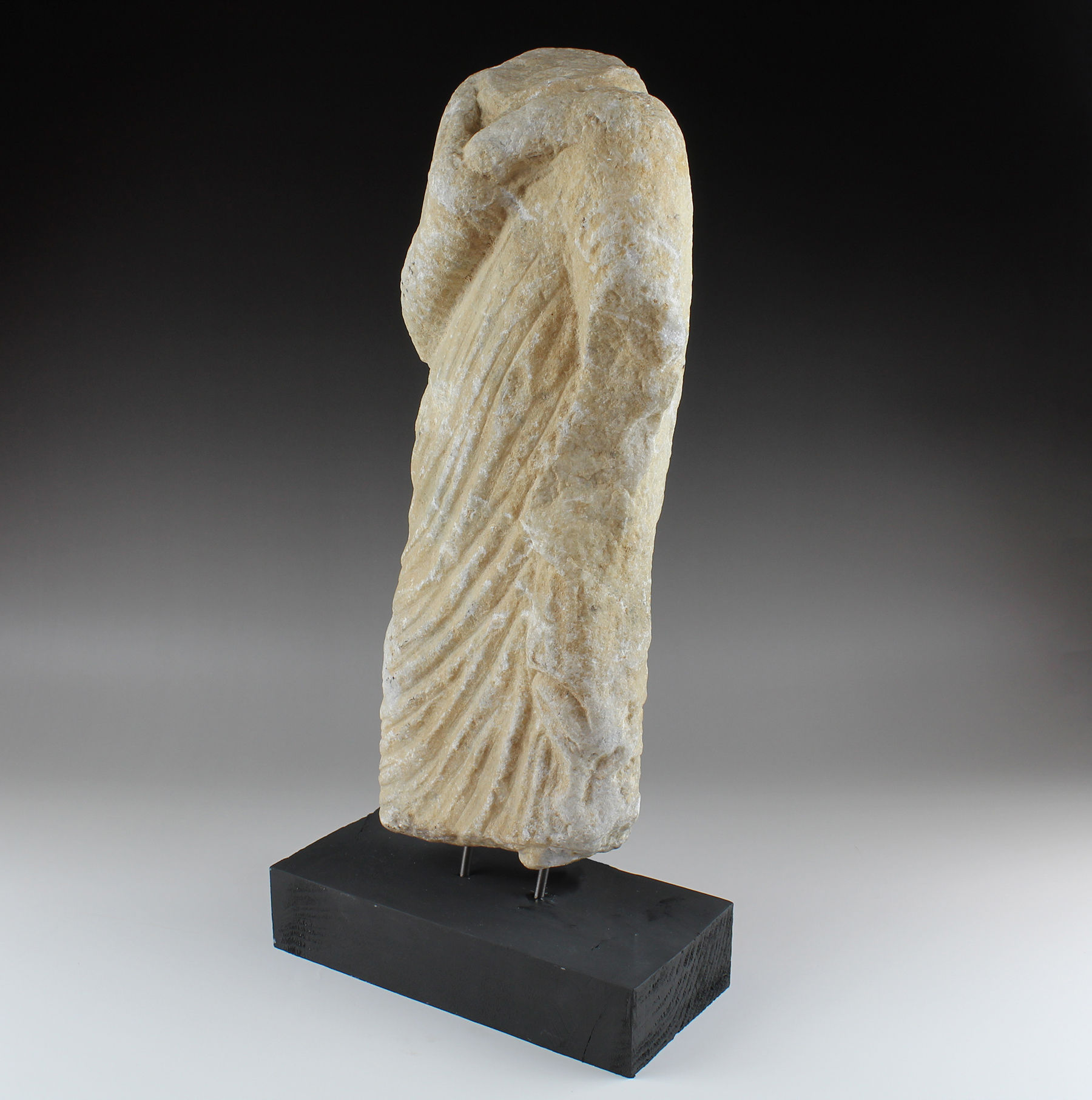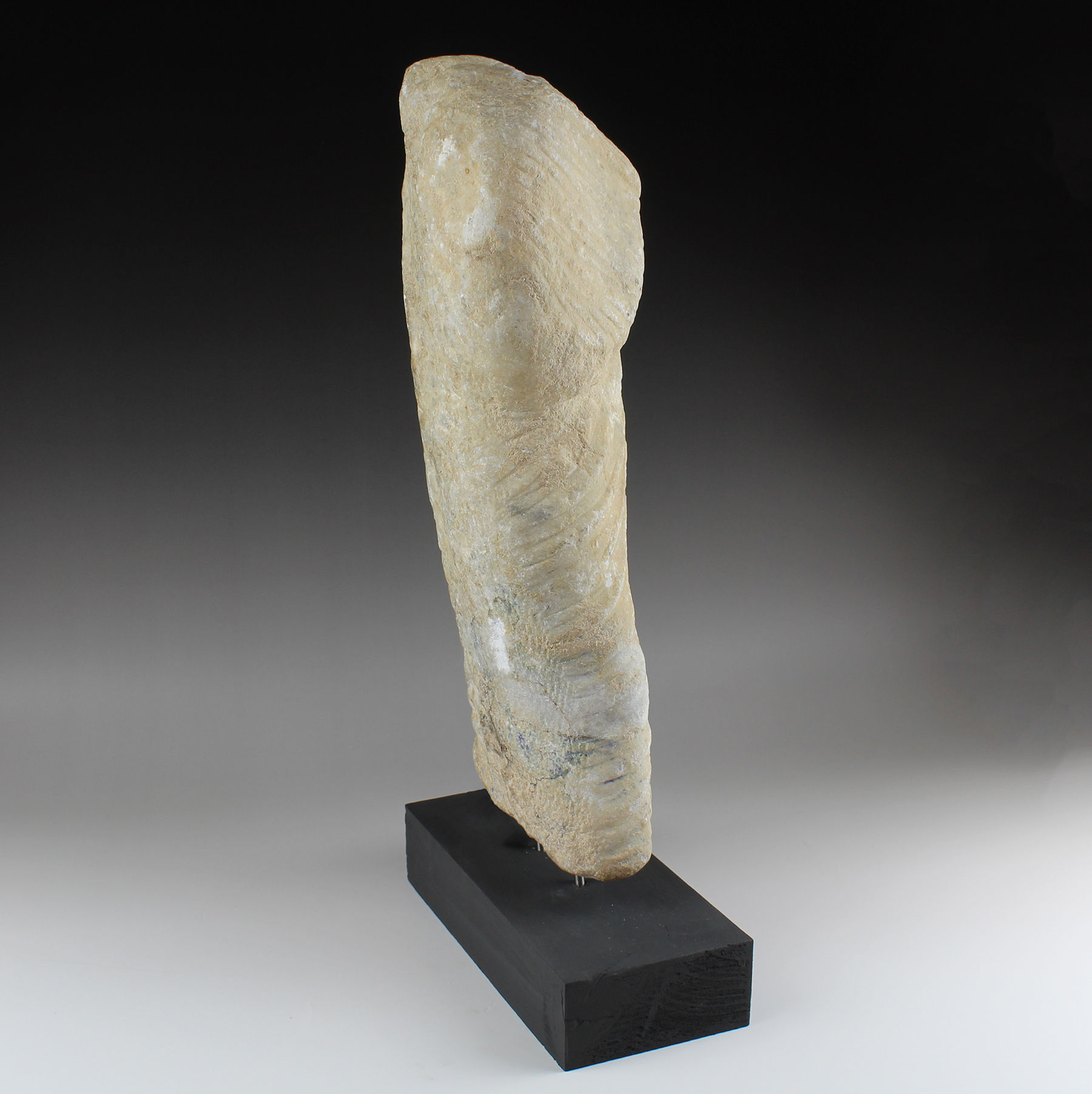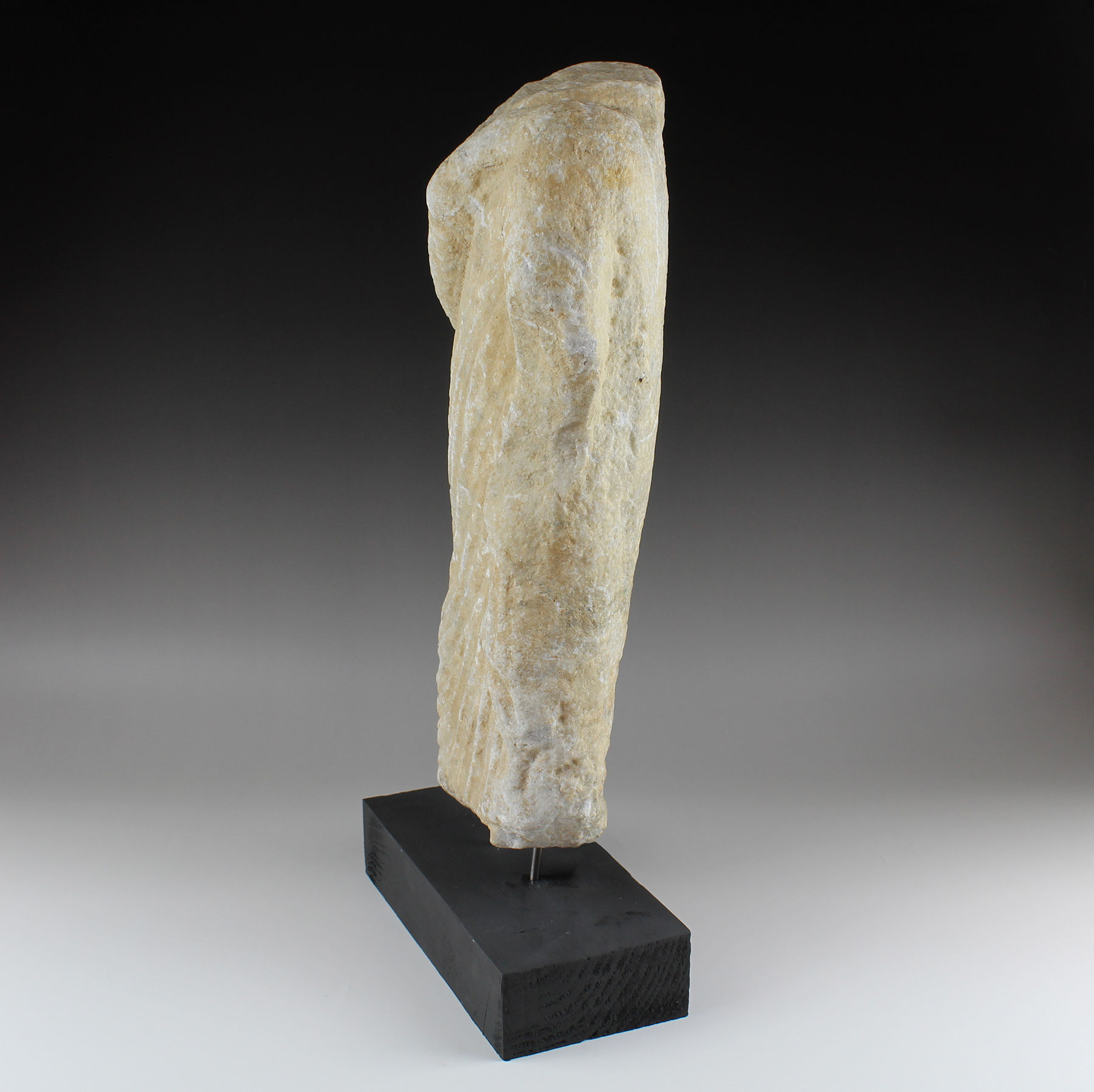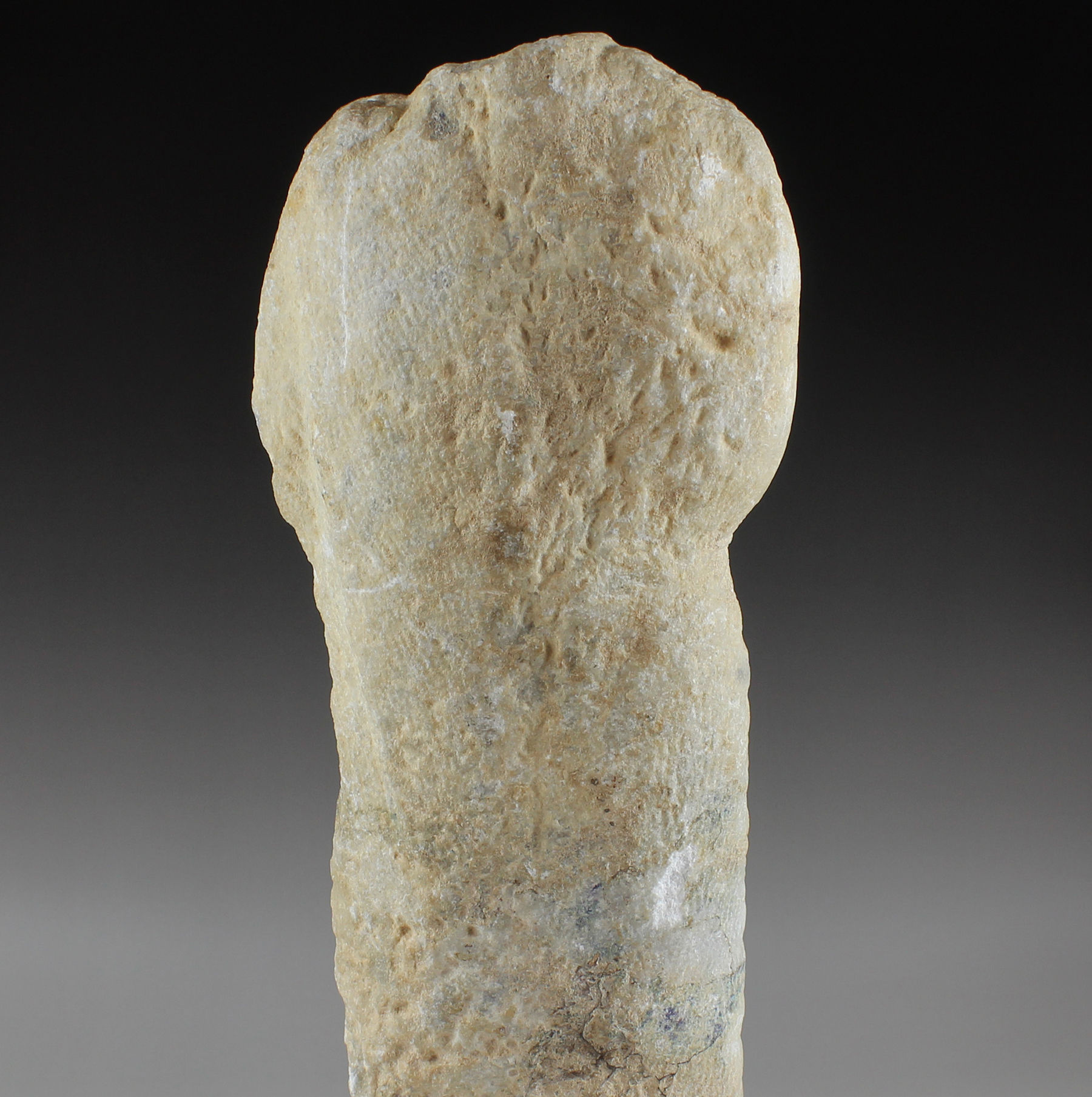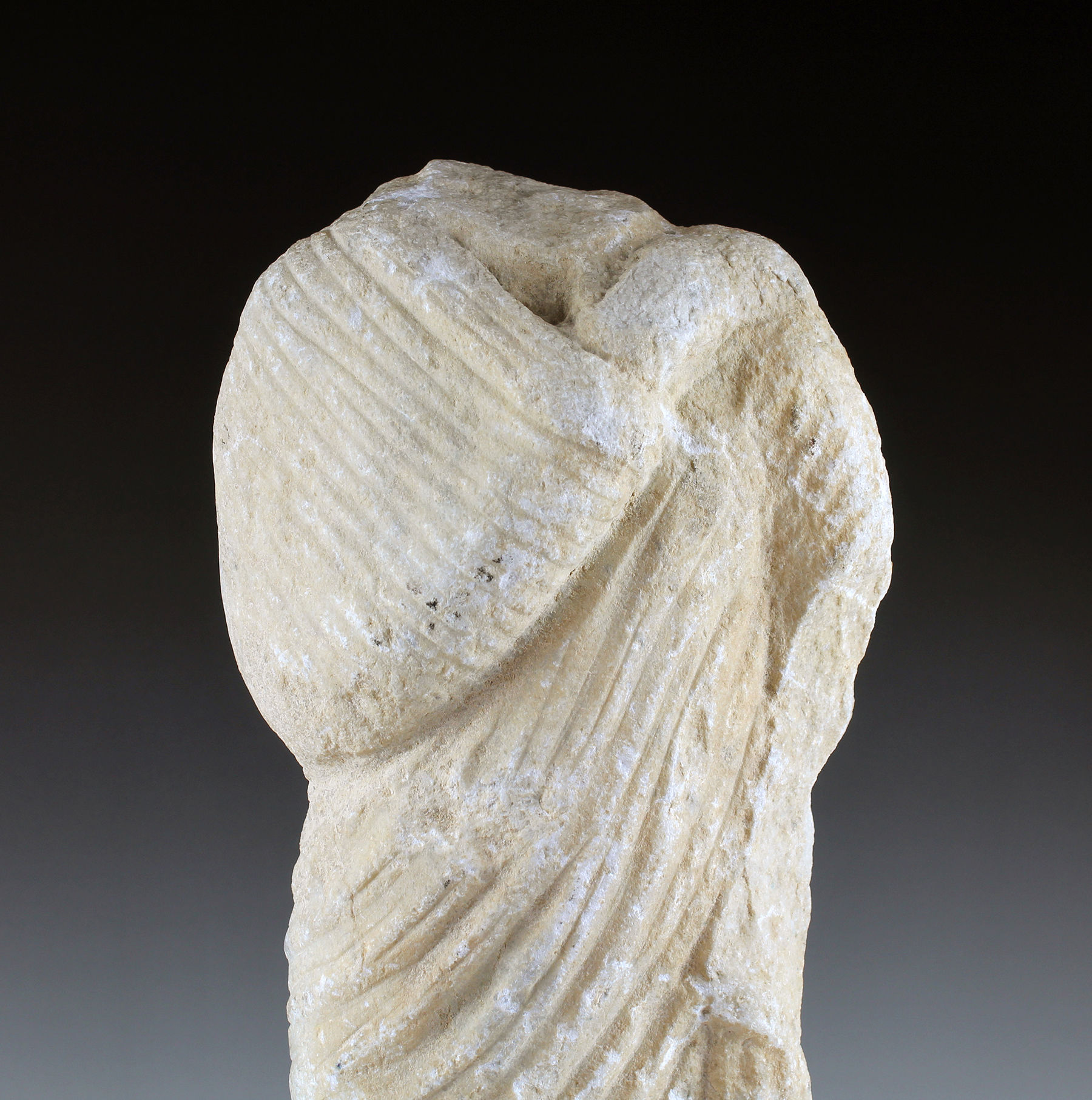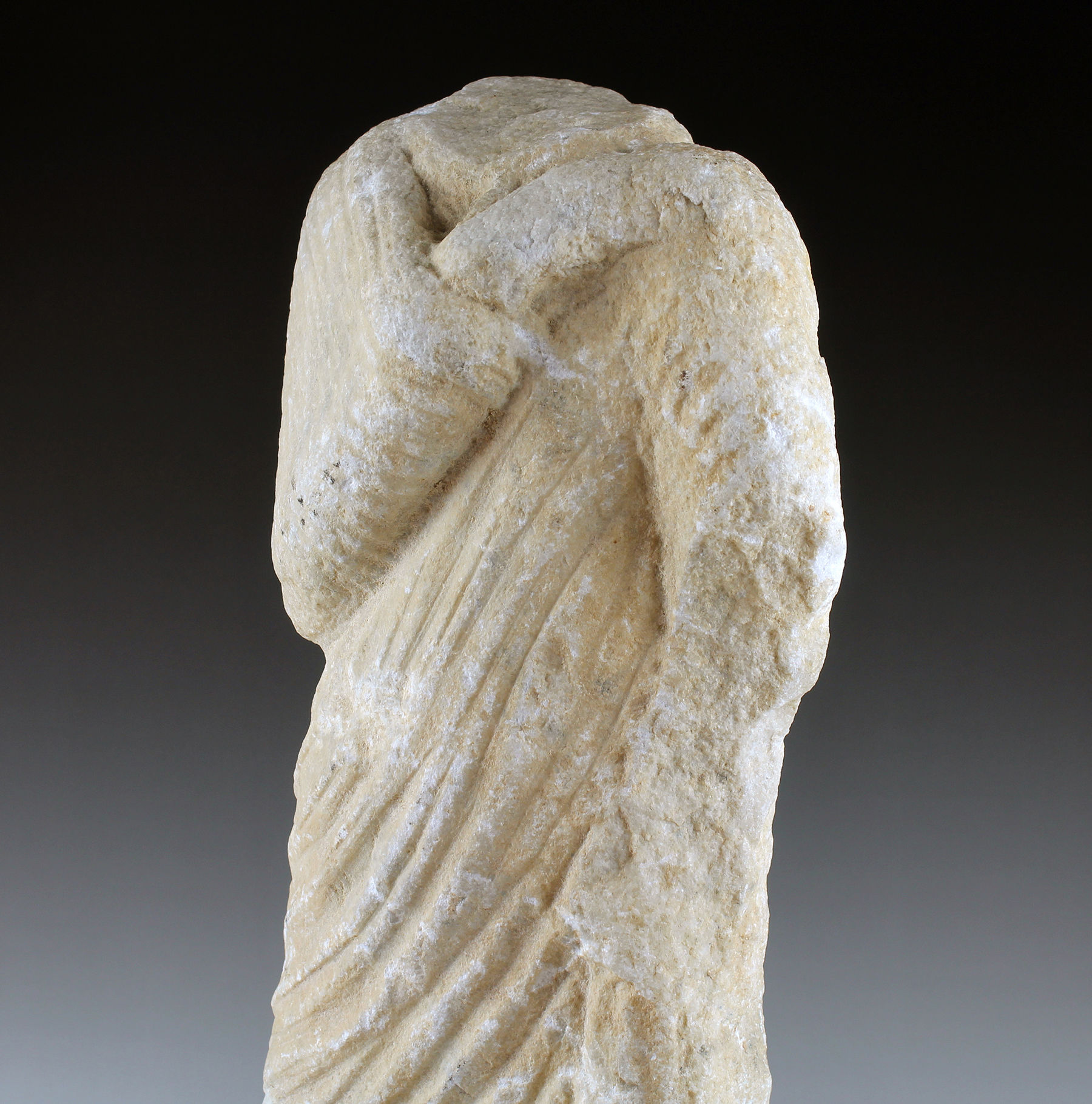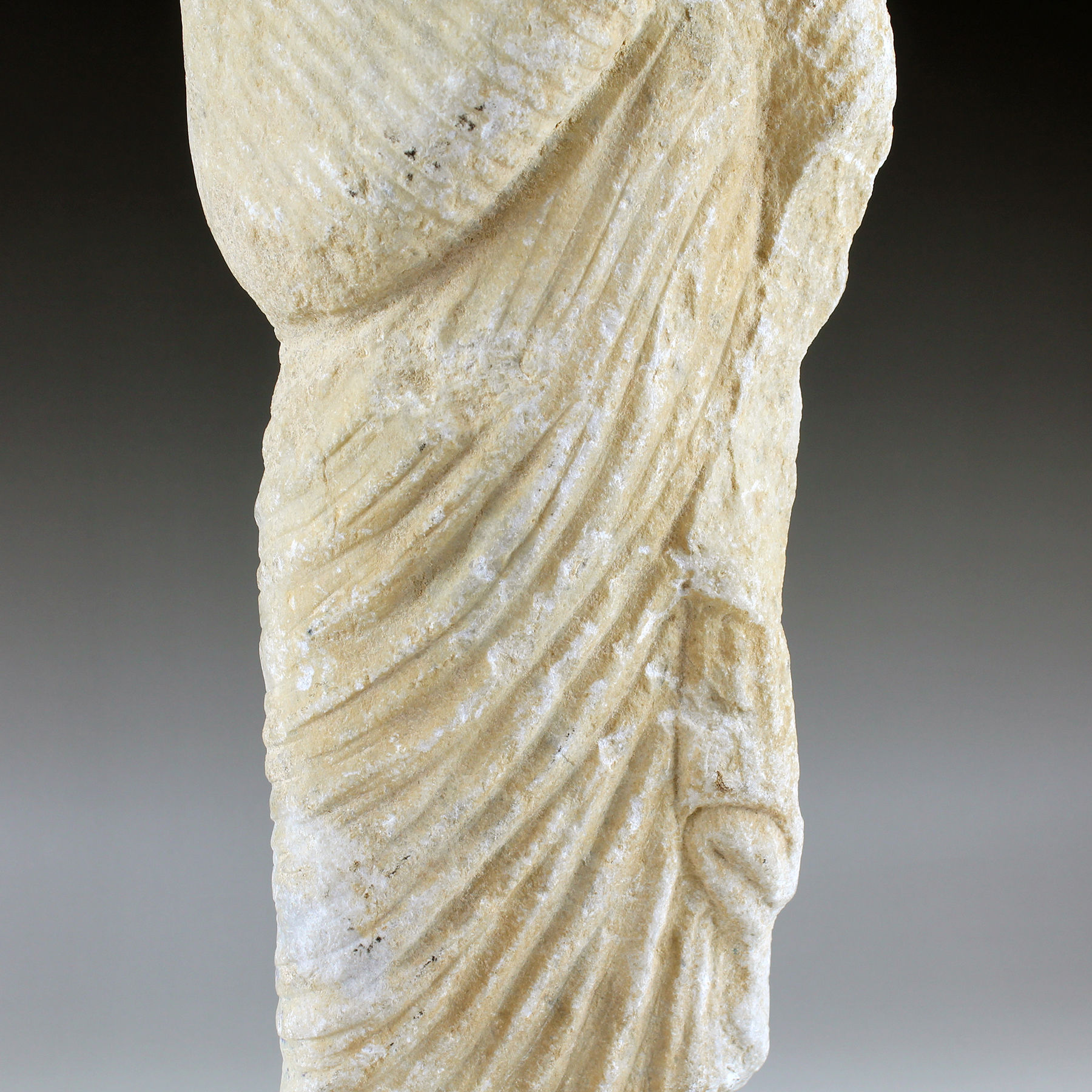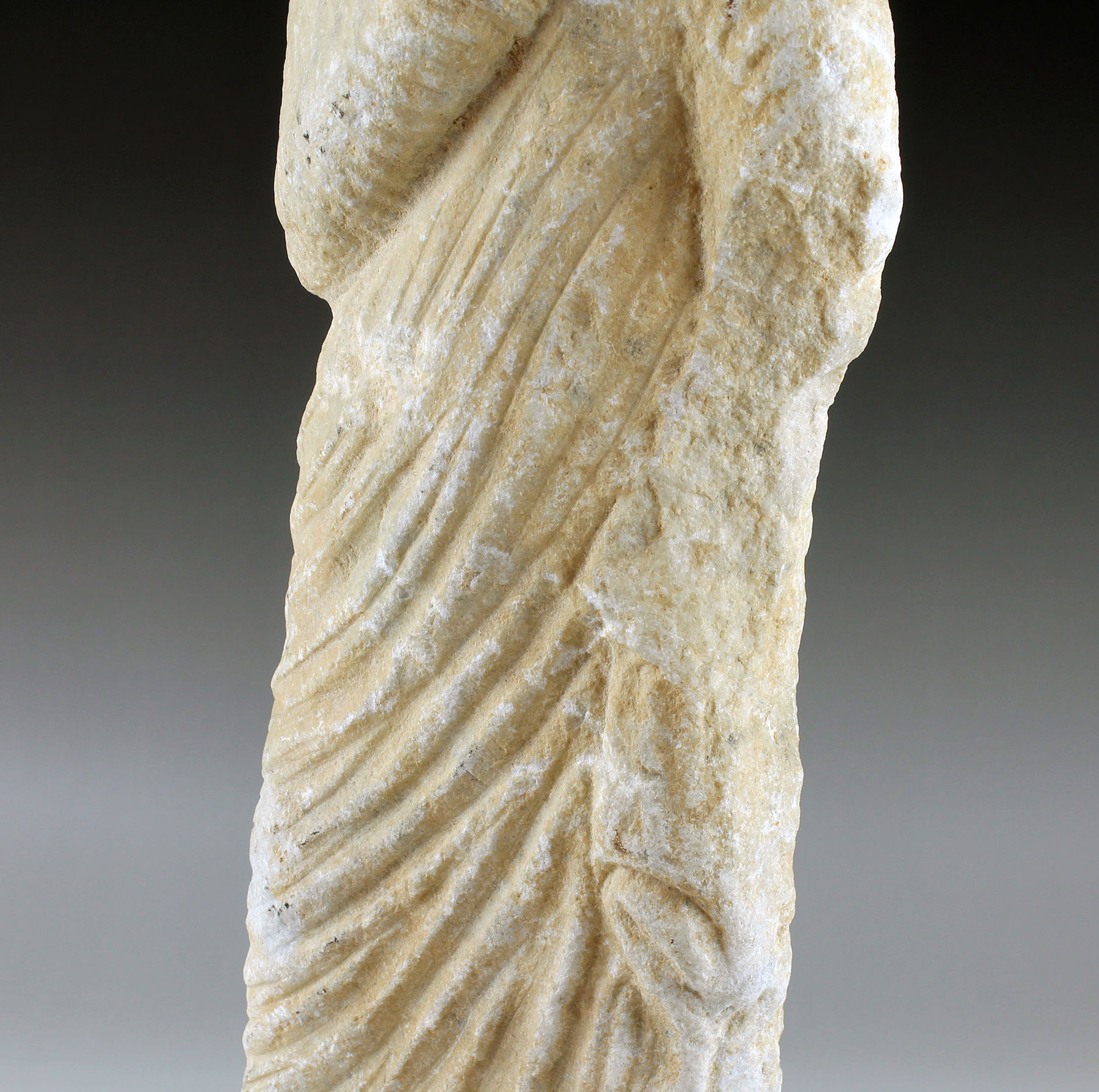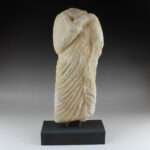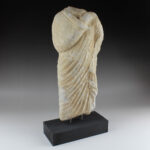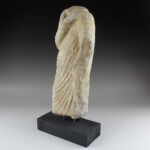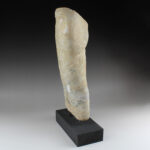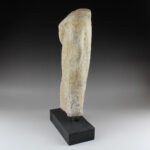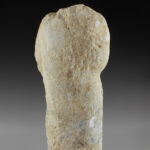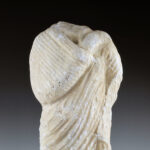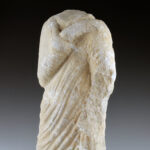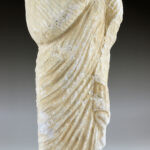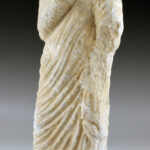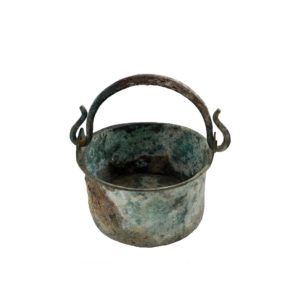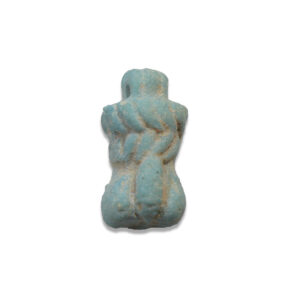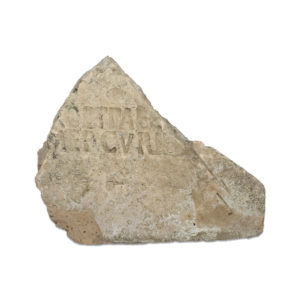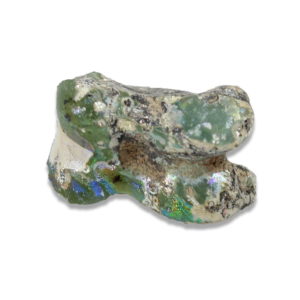Description
| ITEM | Statue of a Togatus (man wearing a toga) |
| MATERIAL | Limestone |
| CULTURE | Roman |
| PERIOD | 3rd Century A.D |
| DIMENSIONS | 370 mm x 165 mm x 110 mm |
| CONDITION | Good condition |
| PROVENANCE | Ex Pierre, Claude and Jeanine Vérite collection, 1930 – 1980, Inventory number Jeanine Vérité ‘4308’ |
The most characteristic Roman dress. The toga, a length of woolen cloth with rounded edges, had been the traditional garment of the Romans for centuries, but by the late first century B.C., it was declining in popularity. As part of his effort to revive ancient values and customs, the emperor Augustus made the toga a sort of unofficial state dress that all citizens were required to wear in the forum. A cylindrical leather box for scrolls, represented at the feet of this figure, identify him as a man engaged in public business. A portrait head and arms were carved separately and added.
The toga was the badge of Roman citizenship. Vergil, for example, calls the Romans a gens togata. It is not surprising then to find hundreds of life-size togate statues of Romans and countless numbers of representations of toga-clad men in reliefs and paitings scattered throughout the museums, private collections, and archaeological sites of the world. Several studies or parts of studies have been devoted to the canonical Republican form of the toga, the short and narrow toga exigua, and to dating the transition to the later longer and wider toga of the late Republic and the Empire based on literary and numismatic evidence.


